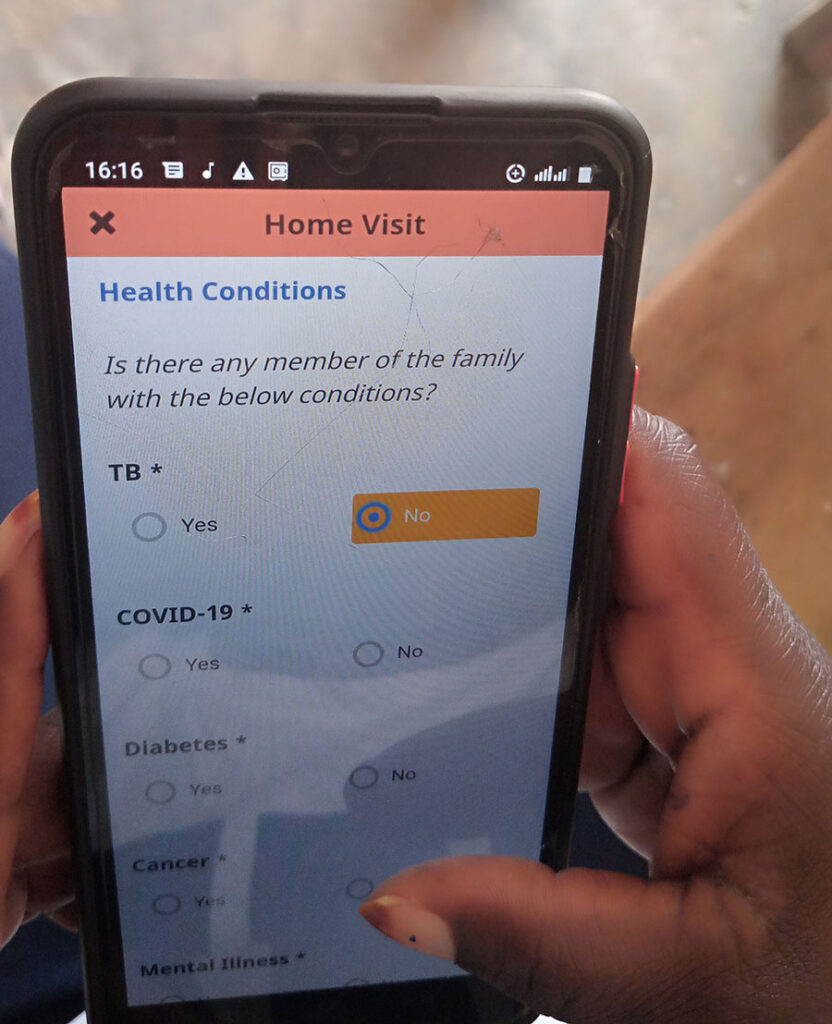With 83.37% of the world’s population owning a smartphone, it is only right that we integrate health systems toward the digital direction that the world is headed. Over the past few years, there have been significant efforts worldwide to digitize health systems. The plan for Universal Health Coverage has driven the exploration of various innovative approaches to expanding health services to the general population.
Community Health Workers are the foundation of health systems. They conduct household visits, follow up with expectant mothers to attend their ANCs, follow up 48 hours after the birth of a child, and teach health promotive behavior among other roles. All these data need to be captured for the purpose of Community Health Services. Locally, Kenyan CHVs use reporting tools provided by the Ministry of Health: MoH 513(Household Registry) and MoH 514(Service Delivery Logbook). These old reporting tools are not the most efficient as they are prone to errors, loss of tools, and damage of tools rendering them illegible, and cumbersome, and the data can’t be verified.
For Kisumu County, during a Governor’s visit to Isiolo County during the UHC launch, the governor was impressed by the graduating CHVs who were all digitally enabled to increase their functionality. The implementing partner in Isiolo County- Living Goods signed a memorandum of understanding with Kisumu County to have the same implemented in Kisumu County.
Speaking in an interview, at the Regional Block Meeting in Naivasha, Maureen Opiyo, the County Community Health Focal Person for Kisumu County, the process began in October 2020 in Muhoroni and Nyakach sub-counties. This was at the height of the pandemic and the CHVs amidst lockdowns, social distancing, and anxiety surrounding the disease worked remotely using phone calls to keep up with their household visits. CHVs were also at the frontline spreading awareness of the disease to prevent infections This presented an opportunity for the County to optimize the digitization of their Community Health Systems.

The biggest challenge however was financing. With a total of 2298 CHVs in Kisumu, the cost of training, acquiring phones, and managing the data would be too high and the county entered into a 70:30 agreement with Living Goods to support. Living Goods financed the acquisition of phones for the CHVs, tablets for the CHAs, data bundles, and hosting for the data collected. The County government of Kisumu financed the training curriculum, trained trainers of trainers (ToTs), and provided training venues. The volunteers also went through advanced modules training, which involves management of specific conditions such as integrated community case management (iCCM).
The scale-up was done in phases starting with Muhoroni and Nyakach sub-counties, before scaling up Nyando and Kisumu-East sub-counties. Presently, 75% of Kisumu County CHVs are digitally trained and empowered. The remaining 3 sub-counties have been partially digitized, but Kisumu County strives to have them fully digitized by the end of the year.
This has greatly improved the quality of data received and consequently improved the health status of the population. The eCHIS app that the CHVs use can input data from their household visits and also tracks the stock of essential commodities making it more accurate. The eCHIS app for Kisumu County has eased the workload of compiling reports, brought about accountability, ensured 100% completeness of data and verification, and enables timely-data-driven decision-making to inform policies and resource allocation.

There is significant evidence of the positive outcomes of digitizing Community Health Services: data is received in near real-time, the data can be verified and there is prompt service delivery now at the community level because of the phone reminders.
Digitization of community health systems is important in monitoring progress towards the Universal Health Coverage (UHC) agenda.

One thought on “Digitizing Community Health Services in Kenya”
This is a great move .
I hope we will get the same in Homabay County.